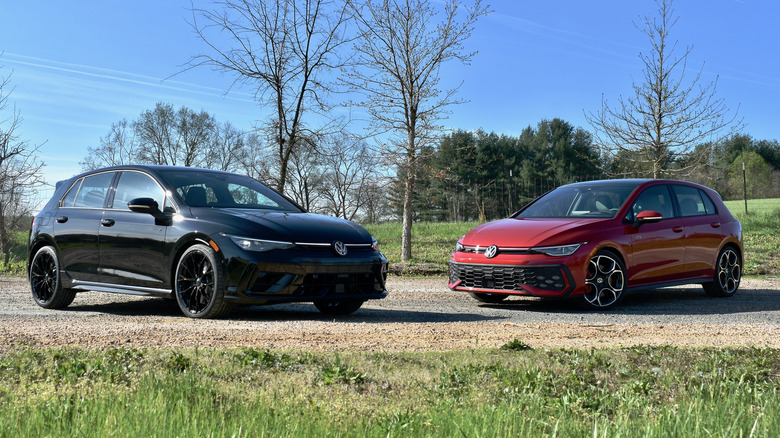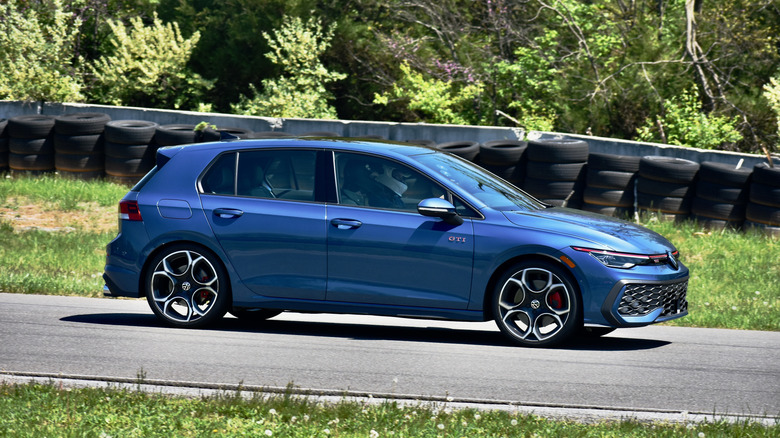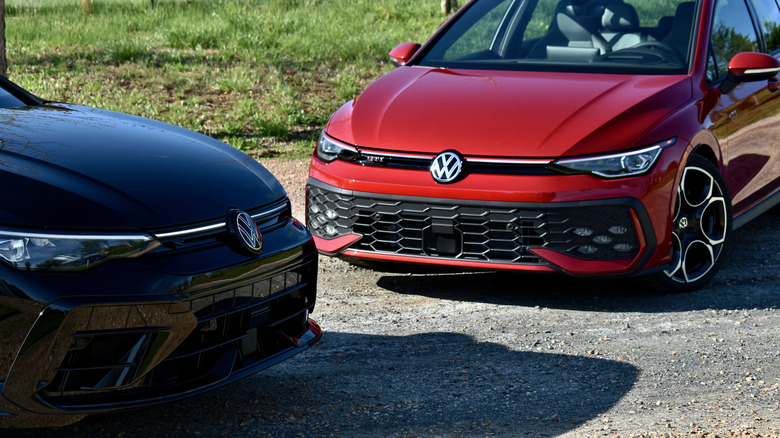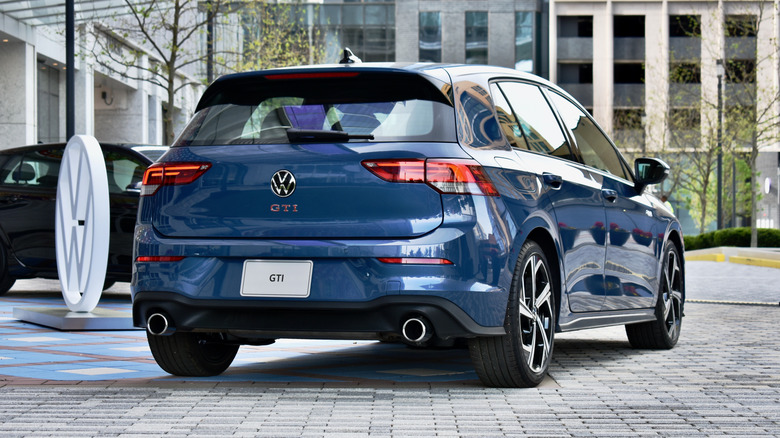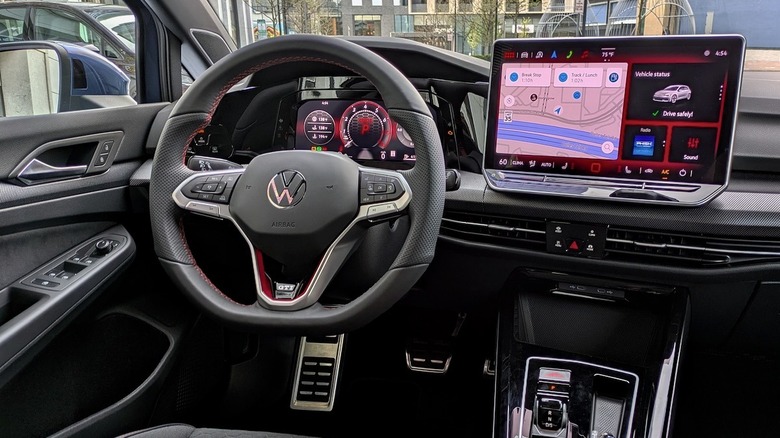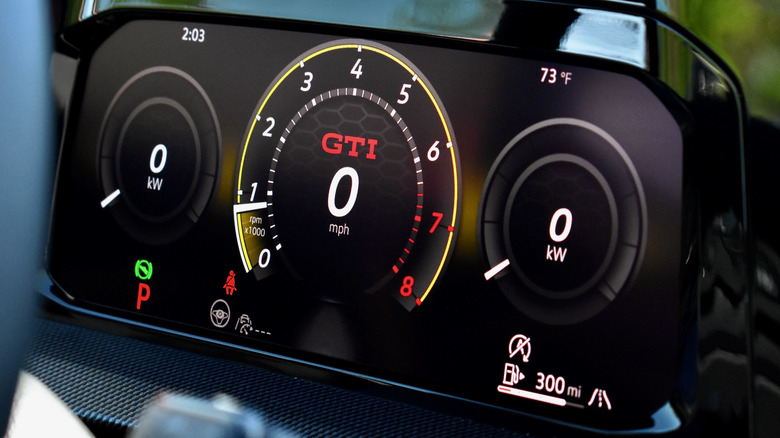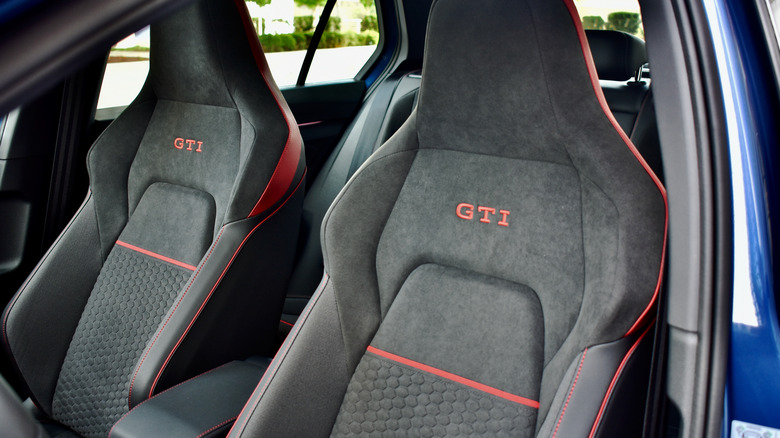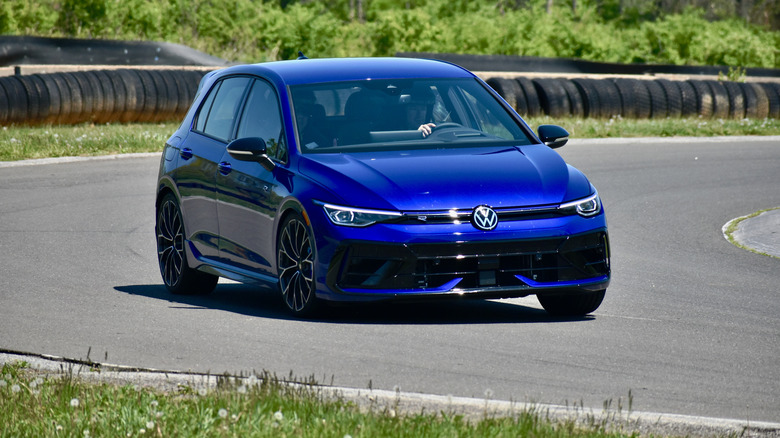2025 VW Golf R And Golf GTI First Drive: A Missing Manual Isn't The Issue Here
If you like driving, but also live in the real world, there's no better option than a hot hatchback. Hot hatches combine performance with practicality and (usually) affordability, and Volkswagen is the acknowledged master of the genre.
Since its European launch in 1976, the Volkswagen Golf GTI has been the yardstick against which all other hot hatches are measured, while its New Millennium Golf R counterpart has evolved from the limited-edition Golf R32 of 2002 to a regular presence in the lineup for buyers who want a little bit extra.
Both the 2025 Volkswagen Golf GTI and Golf R continue to offer driving fun in a package that won't break the bank or require a second car for more mundane tasks. That's what allowed hot hatches to displace traditional sports cars in the 1970s and 1980s, and it's just as relevant today. So while updates to both the Golf GTI and Golf R for the 2025 model year are modest, it's worth appreciating that they're still around at all.
Less-subdued styling than previous generations
The two VW hot hatches have already survived lineup cuts. Since these eighth-generation (or Mark VIII, to VW fans) iterations arrived as 2022 models, VW has only been selling the GTI and R here, while the standard Golf continues in other markets. Meanwhile, the Passat sedan has been discontinued, leaving the Jetta as the only other model in VW's U.S. lineup that isn't a crossover or van.
Mark VIII Golf models still use the MQB platform that originated with the previous-generation Golf, but with dramatically different styling. The conservative-but-handsome look of the seventh-generation Golf was binned in favor of a scowling front end and horizontal taillights that make the eight-generation models look low and wide from most angles, although the inward curve of the body sides makes for an awkward contrast at others.
VW made some small styling changes for 2025. Both models get adaptive front lighting systems and what VW claims are new front fascia designs (it's hard to tell the difference, though). The Golf R retains its larger front air intakes (which also aid brake cooling) while gaining the illuminated VW logo previously available on the GTI. New 19-inch wheels, including one for the GTI that references the "horseshoe" wheel of the early 2000s Mark V GTI, and a lightweight forged alloy version of the Golf R claimed to save four pounds at the corners (part of a Euro Style Package that also deletes the sunroof), round out the changes.
Drama-free powertrains
Both hatches continue with sportier versions of VW's ubiquitous EA888 2.0-liter turbocharged four-cylinder engine. As with the 2024 model, the GTI version is tuned for 241 horsepower and 273 pound-feet of torque. The Golf R version gets a 13-hp bump for 2025, to 328 hp, thanks to a new ECU tune, while torque stays at 295 lb-ft. The Golf R's new Euro Style Package also includes an Akrapovič titanium axle-back exhaust system that doesn't increase power, but does make the engine sound a bit racier.
In both cars, the EA888 feels exactly like what it is: a workhorse turbocharged engine retuned for a performance application. It revs quickly for an engine that started out powering more humdrum VW models, but the seemingly endless torque makes the biggest impression. It makes for smooth, drama-free acceleration in nearly any situation, which may not fit with the rambunctious character of older generations of hot hatch, but has much greater utility if you actually want to go fast.
Like previous iterations, the 2025 Golf GTI and Golf R are also fairly economical. EPA-estimated fuel economy of 27 mpg combined (24 mpg city, 32 mpg highway) for the GTI, and 25 mpg combined (22 mpg city, 31 mpg highway) for the R, are more than reasonable given the amount of power being pumped out of their engines.
No more manuals
Unfortunately for VW's marketing department, the changes made to the Golf GTI and Golf R for 2025 will likely be overshadowed, in car enthusiasts' eyes at least, by the loss of their manual transmissions. The six-speed manual option for both cars was discontinued after 2024, making a seven-speed dual-clutch transmission mandatory. In the GTI, that transmission remains connected to front-wheel drive (with a standard limited-slip differential), while the Golf R has an all-wheel drive system with rear-axle torque vectoring.
As with so many other cars, the reason for this, according to VW, is that not enough people bought the stick shift. It was already being offered primarily for the North American market, and sales simply weren't high enough to justify keeping it in what is a much smaller market for the Golf than Europe.
Yet while a hot hatch without a manual transmission does seem wrong, the third pedal was already superfluous in the current-generation Golf GTI and Golf R. Their engines' very flexible powerbands meant there wasn't much need to manage power through gear changes, and the quick, Germanic action of the dual-clutch gearbox is more in character with the efficient power delivery and faultless chassis behavior of these cars. The manual was more involving, but that's about it.
Ruthlessly competent corner carvers
A bit more involvement wouldn't be a bad thing, though. These hatches possess more capability than most drivers will be able to exploit, but that creates a sensation of just being along for the ride.
Make no mistake, these cars do everything right. Even the front-wheel drive GTI has grip for days, and the all-wheel drive Golf R adds more, in line with its additional power. Steering is precise without being nervous, allowing for small corrections when necessary without having to make them constantly, and both hatches felt nimble, turning into corners crisply and decisively. Neither car gets too unsettled when you're less than smooth with your inputs. But it all happens with so little feedback that it's hard to derive satisfaction from the experience.
Aside from terminal velocity, there's also little to distinguish the more powerful Golf R from its overachieving platform mate. The all-wheel drive system and rear torque vectoring help rotate the rear end more predictably, but the GTI is so unflappable that it leaves little room for the Golf R to improve.
The flip-side of this drama-free performance is everyday usability. With adaptive damping (standard on the Golf R, optional on the GTI), both cars were perfectly pleasant to drive on public roads even in the firmer Sport setting. We also did a few laps of Summit Motorsports Park's bumpy Jefferson Circuit, which did require switching to the Comfort setting to keep from porpoising like a 2022 Mercedes Formula One car.
Improved interface still leaves out something important
Both 2025 Golf models receive a larger 12.9-inch touchscreen, running VW's MIB3 infotainment system. This is the updated setup previously seen in the electric ID.Buzz and ID.4, with what VW claims are faster processing and more intuitive layouts. The screen was indeed responsive, although backtracking from some of the menus could be a bit confusing. Adopting a more recognizable home button instead of the chiclet-shaped one currently used would definitely help.
More frustrating was VW's retention of touch sliders below the screen for audio volume and temperature. They may declutter the dash and save a bit of money on switchgear, but the lack of feedback and relatively small touch points makes them difficult to use. VW did at least convert the touchpads on the steering wheel of the GTI to physical buttons, and it's possible to adjust temperature in both cars via the touchscreen, which we found to be easier.
Wireless Apple CarPlay/Android Auto connectivity and a 10.25-inch digital instrument cluster return, and are joined by a one-year trial of ChatGPT connectivity, plus a ventilated 15-watt wireless charging pad that will likely prove more useful.
Practical interiors with stylish sport seats
VW's tech direction may be questionable, but it's hard to argue with the practicality of this pair of hatchbacks—mainly because they're among the last of their kind. GTI rivals like the Honda Civic Si, Hyundai Elantra N, and Subaru WRX are only available as sedans, with similar headroom and legroom for driver and passengers, but less cargo space.
For Golf R money, one could also get a Civic Type R or Toyota GR Corolla hatch. The Type R offers 24.5 cubic feet of cargo space with its rear seats in place, compared to 19.9 cubic feet for the Golf R, while the GR Corolla offers 17.8 cubic feet. Fold those rear seats.
Meanwhile, the front row is a nice place to be in either VW. Sporty front seats—with enough side bolstering to keep you from sliding out of them without being constricting—are now available with European-style ArtVelours upholstery. GTI SE models get a red-and-black combination with honeycomb texturing, while blue-and-gray versions are part of the Golf R Euro Style Package. Both add a bit of fun to otherwise staid interiors.
2025 Volkswagen Golf R and GTI Verdict
2025 Golf GTI pricing starts at $33,670 (all prices include a $1,225 destination charge) for the base S trim level. An SE grade adds the fancier ArtVelours seats, a Harman Kardon audio system, sunroof, keyless entry, and 18-inch wheels for $38,645. The top Autobahn grade includes adaptive damping, summer tires on 19-inch wheels, a head-up display, and other features for $42,105.
There's still an appreciable gap between the GTI Autobahn and the 2025 Golf R, which starts at $48,325 with destination. However, there isn't much further to go from there, as the only options are the Euro Style Package ($3,795 extra) and a new Black Edition ($1,315 more) that includes darkened exterior trim and carbon fiber interior trim.
The GTI undercuts the Hyundai Elantra N ($35,545) and Subaru WRX ($36,920), but not the Honda Civic Si, which starts at $31,400 with destination. All three offer a more engaging driving experience at the expense of some refinement, plus manual transmissions for those who want them.
Manuals are also available in the Golf R's two main rivals—the Honda Civic Type R and Toyota GR Corolla. The Honda starts at $48,325 with destination, while the Toyota looks like quite the bargain at $39,995. But its unhinged nature might make it harder to live with.
There are no wrong answers here. The Golf GTI and Golf R trade some extroversion for better everyday usability. And, along with the ID.Buzz van, they're important reminders of why Volkswagen is so beloved by car enthusiasts.
